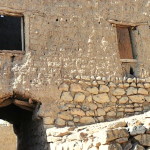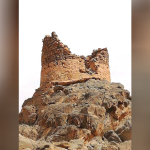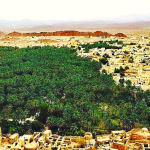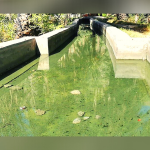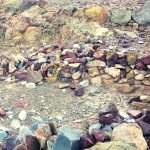Oman
A Trip To Saija: The Hidden Gem Of Samail

Muscat: The village of Saija is the picture-perfect Omani postcard to describe the lush valleys of Al Hajar that teems with flora and fauna.
Story originally published on ONA
Hailed as a beautiful village hidden in the Wilayat of Samail in the Governorate of A’Dakhiliya, Saija forms the picturesque valley under the cliffs of Al Hajar Al Gharbi (Western Mountain Range) connected to Al Jabal Al Akhdar (The Green Mountain).
The village was known in the past as “Sail Ga” – translated from Arabic as “Rain is coming” – due to the heavy annual rains that bless the village, dotting the farms green.

There are also numerous historical and religious artifacts in the village; such as forts, towers, and old neighborhoods that stand witness to the greatness and glory of the Omani people.
The village is also home to “Al Rajm”, which is a collection of graves dating back hundreds of years, at the entrance to the village.

Said bin Hamoud al-Ya’rubi
Said bin Hamoud al-Ya’rubi, one of the villagers echoes his thoughts: “In the village of Saija, there are old neighborhoods that host a group of houses that were previously inhabited by most of the villagers, the most famous of which are the Ya’ariba neighborhood, the Hadhrami neighborhood, and the Jabryeen neighborhood.
“The village has three entrances called Al Sabahat, which are gates that were opened at dawn and closed after sunset prayer, or according to what the people agreed on at that time.”

He told Oman News Agency (ONA) that due to the strategic location of the village near Al Hajar Al Gharbi Range, it had many defensive fortifications. These include the ‘Yellow Tower’, ‘Al Khub Tower’, ‘Al Sharaj Tower’, the ‘Hamrout Tower’, the ‘Wind Tower’, ‘Al Maqsoura Tower’, and the famous the ‘Al Sawda’ Tower’.
All of these towers have lost their structure over the years. So, village dwellers are now calling for the mass refurbishment of these historic elements that give the village its character.
There are about 13 old mosques in the vicinity. The most renowned among them is Jama Masjid, which is also among the largest mosques in the village.

The water-rich region receives rains throughout the year and harbours Aflaj that are the source of life in and around the village.
Orchards and date-palm oases form a beautiful green tableau for visitors, while locals cultivate crops such as watermelon, lemon, garlic, tomato, and wheat grains, in addition to alfalfa.
- Said bin Hamoud al-Ya’rubi
-

 Magazines2 months ago
Magazines2 months agoOER – September 2025 Issue
-

 Alamaliktistaad Magazines2 months ago
Alamaliktistaad Magazines2 months agoAlam Al Iktisaad – September 2025 Edition
-

 News2 months ago
News2 months agoKitchenomiKs Secures Investment of US$3.2M Led by Jasoor Ventures
-

 News2 months ago
News2 months agoCent Capital, AI Finance App by ex-AWS Strategist ‘The Beast of Bay Area,’ Launches to End Financial Anxiety, Hits $1M AUM
-

 News2 months ago
News2 months agoOman Inaugurates ‘Hadatha’ – Its All-New Cybersecurity Center
-

 Banking & Finance2 months ago
Banking & Finance2 months agoOman Arab Bank Highlights Its Ongoing Strategic Initiatives and Future Plans
-

 News2 months ago
News2 months agoIEA Expects Global Oil Market to Remain Oversupplied in 2026
-

 Energy2 months ago
Energy2 months agoWLGA Middle East LPG Summit & Expo 2025 to be held at OCEC on November 10 and 11


